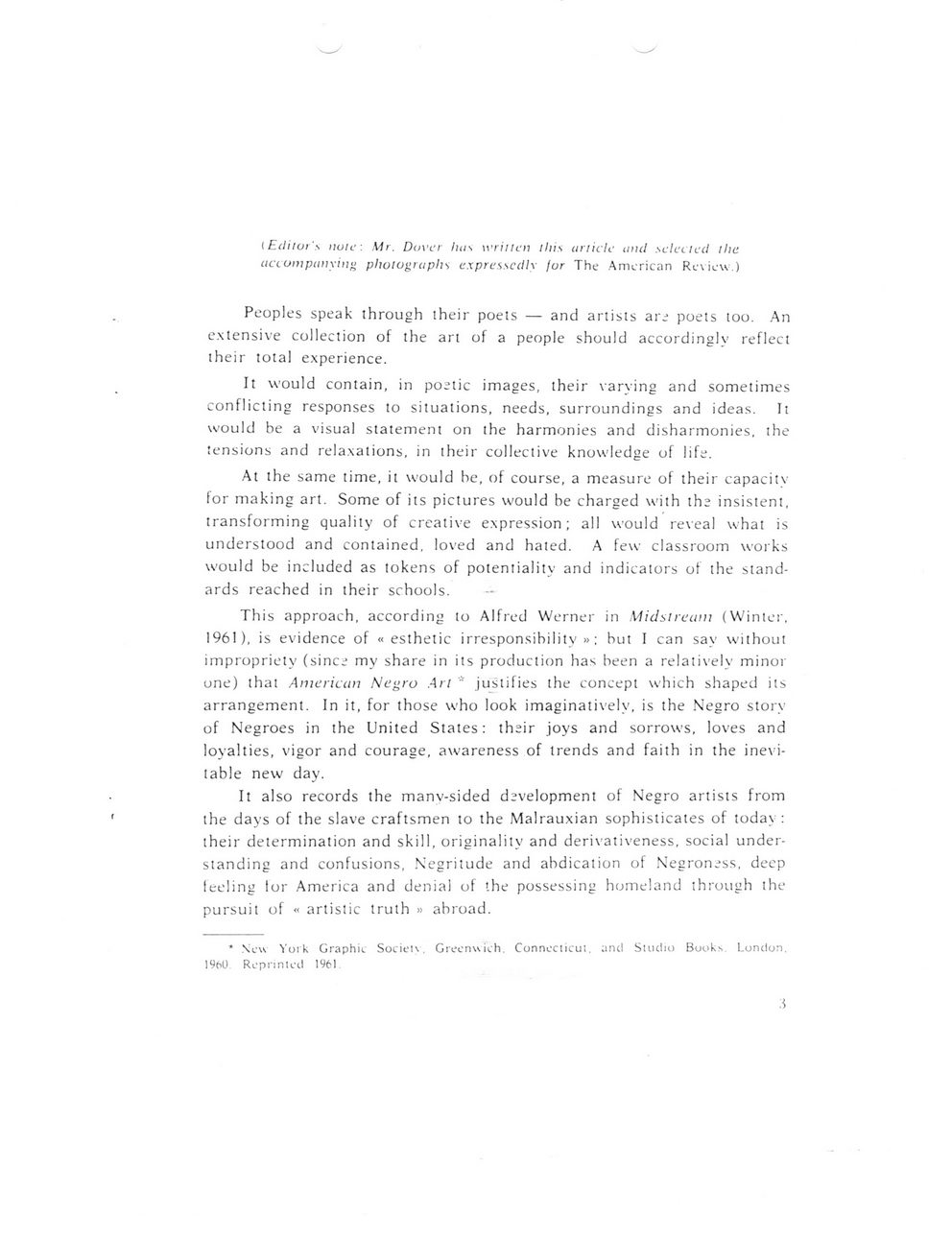This text was obtained via automated optical character recognition.
It has not been edited and may therefore contain several errors.
{Editor's note: Mr. Dover has written this urticlc and sclcctcd the accompanying photographs expressedly for The American Review.)
Peoples speak through their poets ? and artists ara poets too. An extensive collection of the art of a people should accordingly reflect their total experience.
It would contain, in poatic images, their varying and sometimes conflicting responses to situations, needs, surroundings and ideas. It would be a visual statement on the harmonies and disharmonies, the tensions and relaxations, in their collective knowledge of life.
At the same time, it would be, of course, a measure of their capacity tor making art. Some of its pictures would be charged with tha insistent, transforming quality of creative expression; all would reveal what is understood and contained, loved and hated. A few classroom works would be included as tokens of potentiality and indicators of the standards reached in their schools.
This approach, according to Alfred Werner in Midst ream (Winter, 1961), is evidence of ? esthetic irresponsibility ? ; but I can say without impropriety (sinca my share in its production has been a relatively minor one) that American Negro An * justifies the concept which shaped its arrangement. In it, for those who look imaginatively, is the Negro story of Negroes in the United States: thair joys and sorrows, loves and loyalties, vigor and courage, awareness of trends and faith in the inevitable new day.
It also records the manv-sided development of Negro artists from the days of the slave craftsmen to the Malrauxian sophisticates of today: their determination and skill, originality and derivativeness, social understanding and confusions, Negritude and abdication of Negronass, deep leeling tor America and denial of the possessing homeland through the pursuit of ? artistic truth ? abroad.
* Sew York Graphic Societv . Greenuich. Connecticut, and Studio Books. London. I960. Reprinted 1961.
.5

Barthe, Richmond American-Negro-Art-02